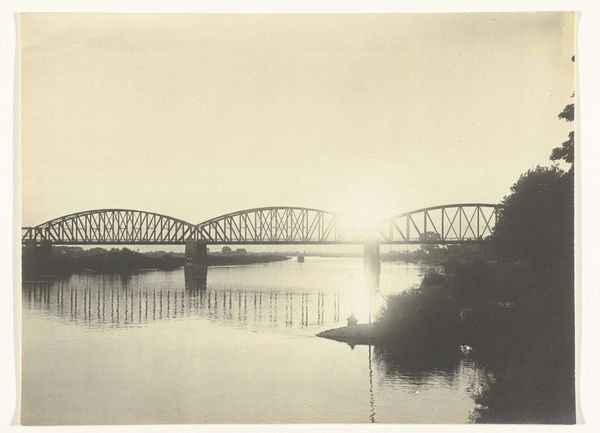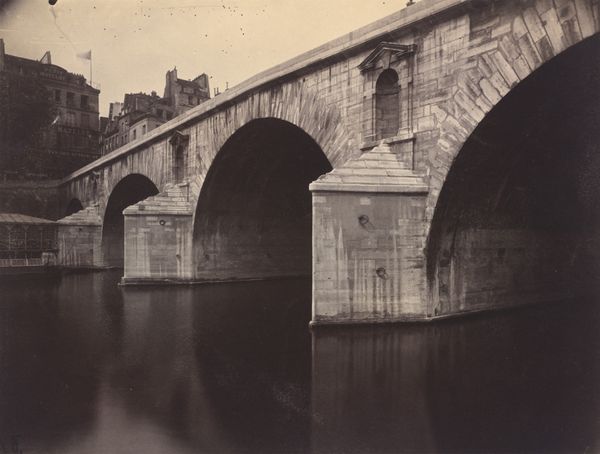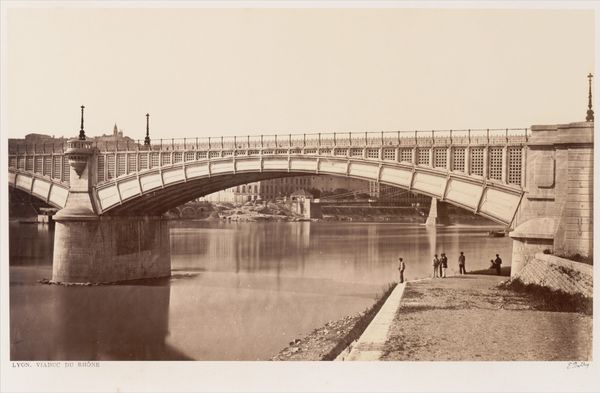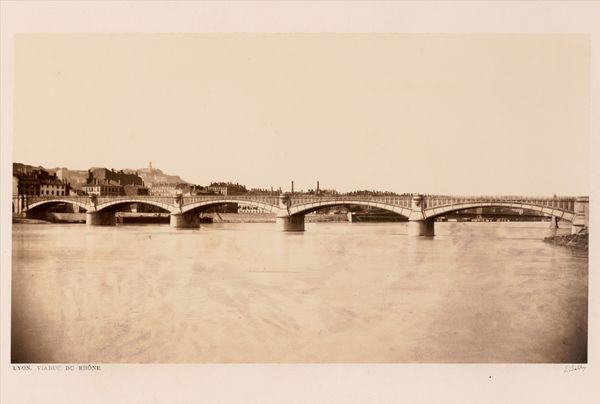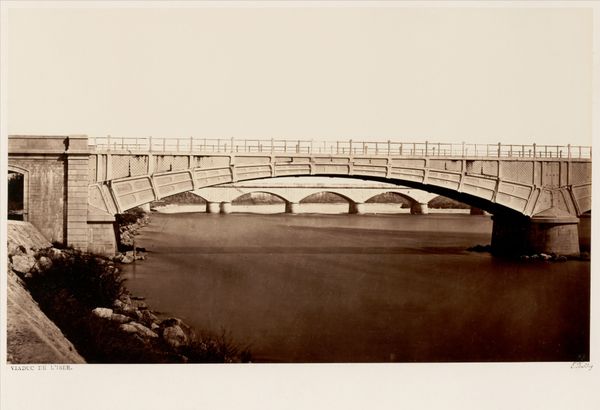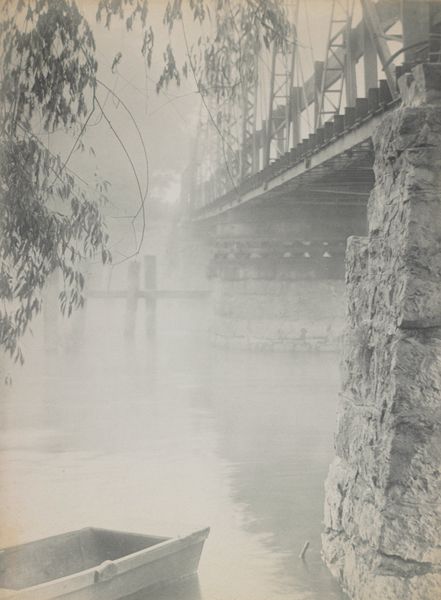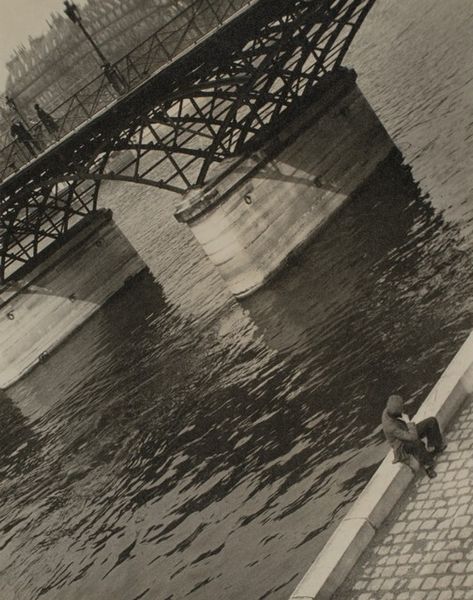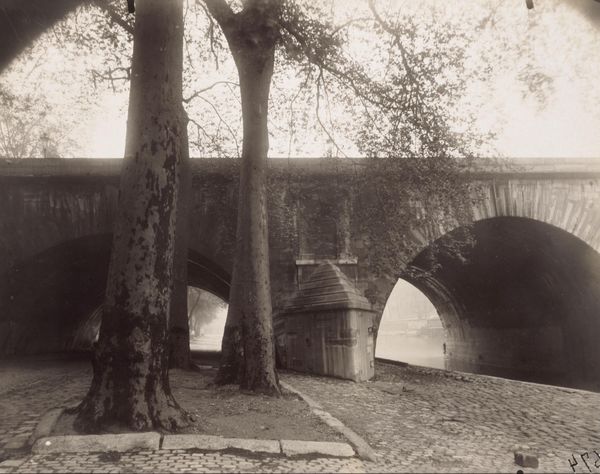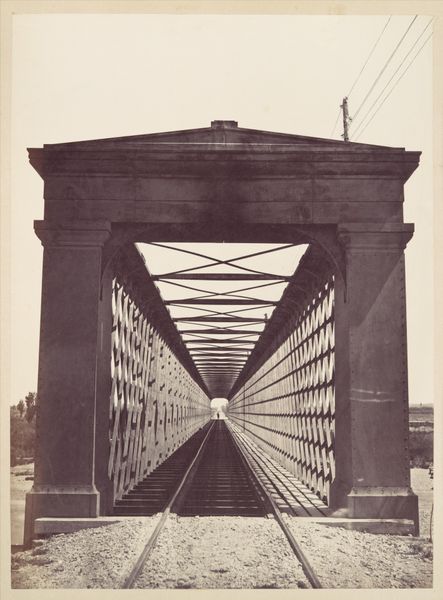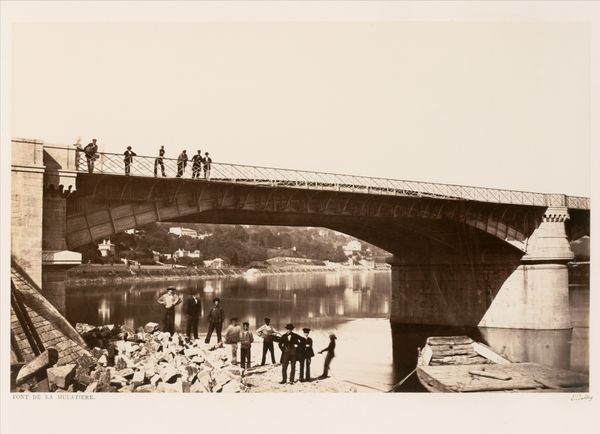
Dimensions: image/sheet: 37.4 × 29.7 cm (14 3/4 × 11 11/16 in.)
Copyright: National Gallery of Art: CC0 1.0
Editor: Here we have Laure Albin Guillot’s gelatin silver print, "Le Pont des Arts," from around the 1930s. I’m immediately struck by its dreamy quality – the bridge almost seems to float between the heavy stone supports and their watery reflections. What do you see in this piece? Curator: For me, this image speaks volumes about the changing role of women in the interwar period. Guillot was a key figure in the French avant-garde, and her work often subtly challenged societal expectations. Consider the bridge itself - a symbol of connection, transition. What does it mean that Guillot, a woman in a male-dominated field, chose to capture this particular scene? Editor: I hadn't considered that angle! It’s easy to just see it as a beautiful cityscape. Curator: Exactly. But think about the social context: the rise of modernist architecture, industrial progress, yet also the shadow of impending war. Guillot’s soft focus, the almost ethereal quality, could be interpreted as a commentary on the fragility of progress, or even a quiet rebellion against the stark, masculine aesthetic often associated with that era. How do the silhouettes of the people on the bridge factor into this? Editor: They look so small, almost insignificant against the massive structure. Maybe it's about the individual's place in a rapidly changing world? Curator: Precisely! And Guillot, through her lens, offers a nuanced perspective. It's not just a picture of a bridge; it’s a statement about identity, gender, and the weight of history. Editor: That’s fascinating. I’ll never look at this image the same way again. Curator: It's about acknowledging that art doesn’t exist in a vacuum. By examining its historical and social context, we unlock deeper layers of meaning.
Comments
No comments
Be the first to comment and join the conversation on the ultimate creative platform.
